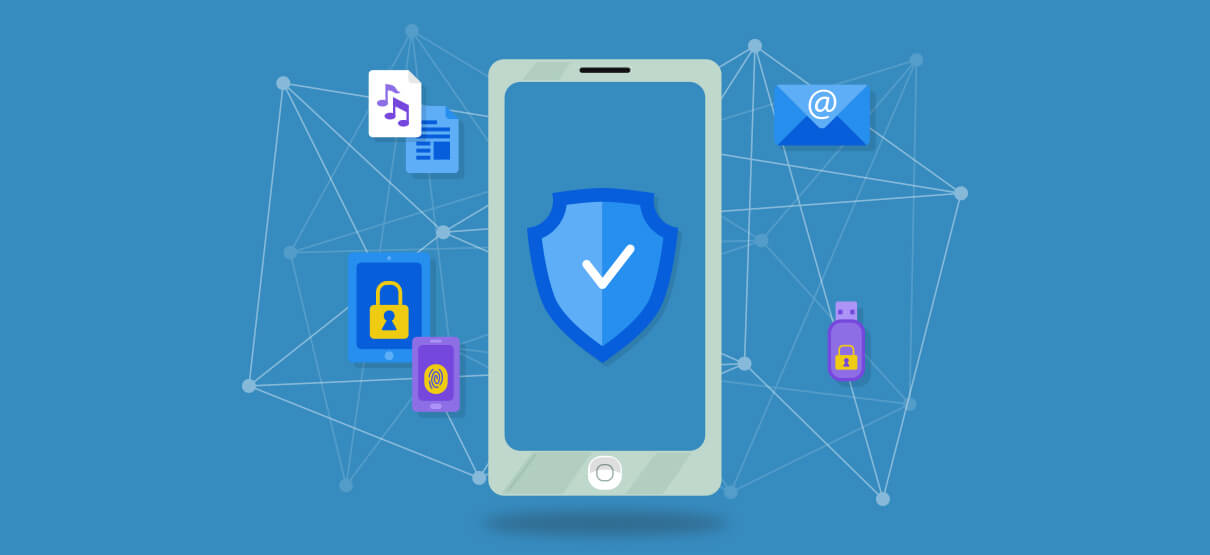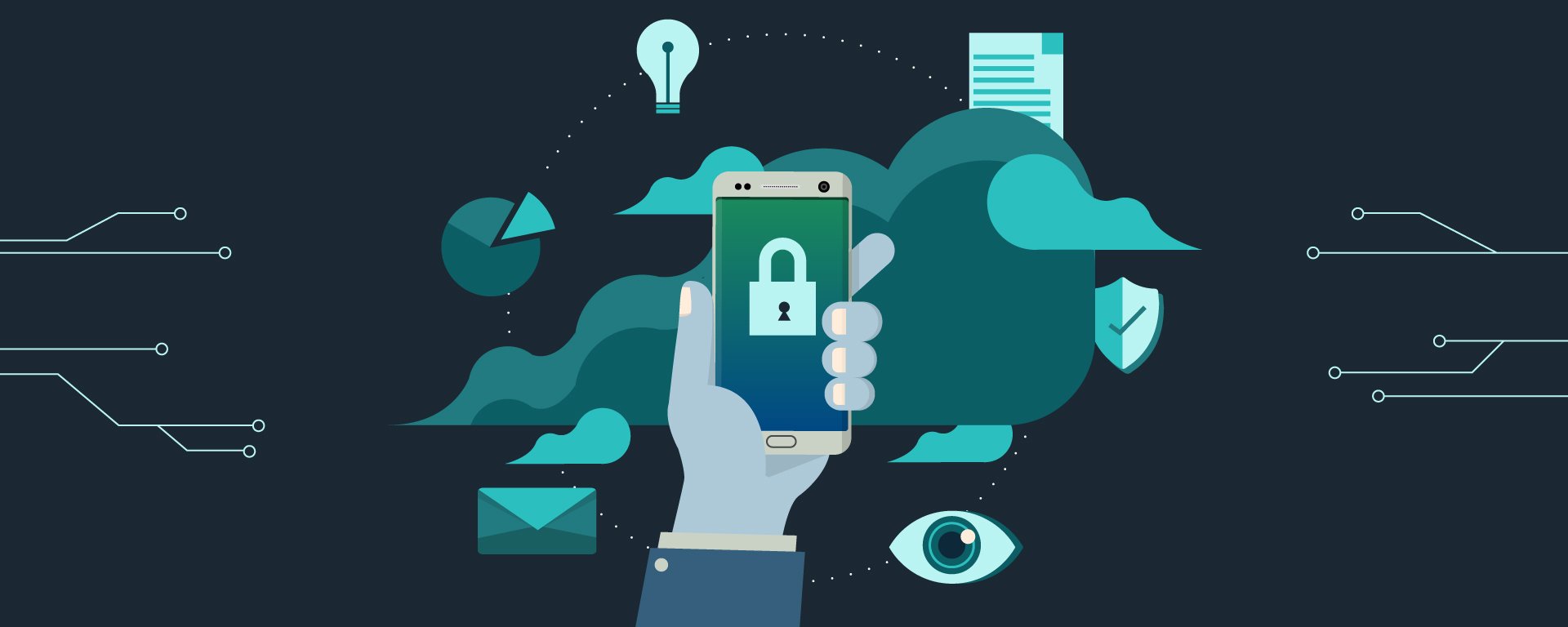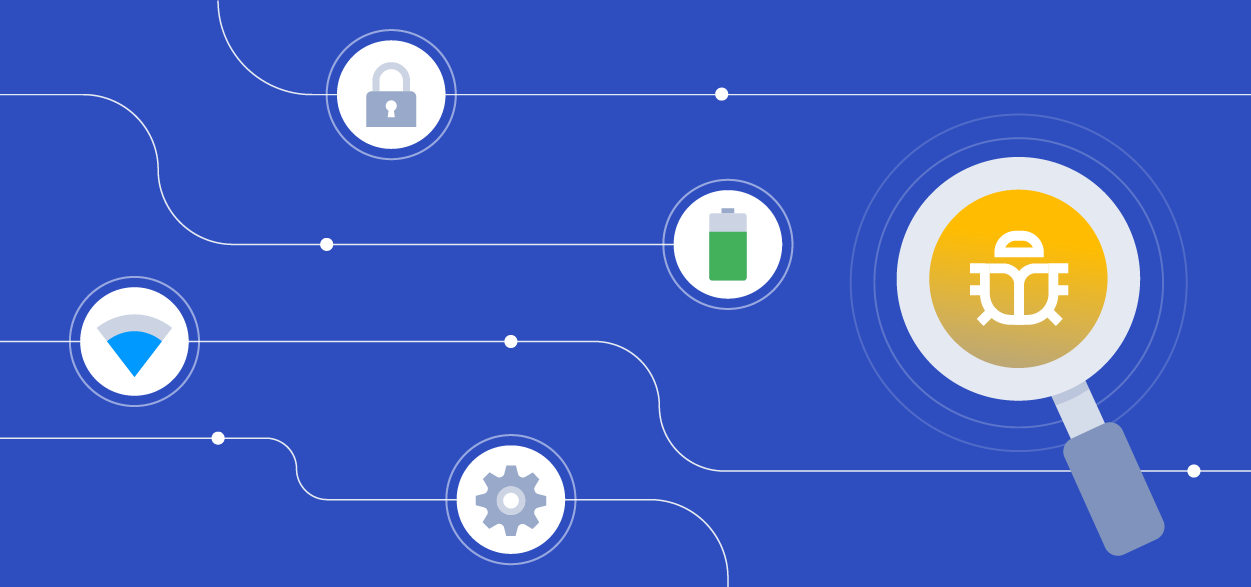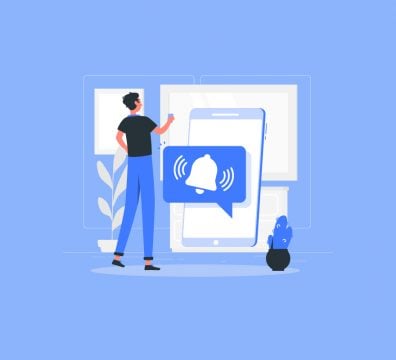The evolution of smartphones has simplified our lives. You can connect with friends, and family, bank, pay bills, book movie tickets online, etc. However, it also makes smartphone users and service providers affected by mobile application security threats. It could be a threat to resources or personal information.
Smartphone users and app developers need to be smarter to minimize risk. However, most people using smartphones are not tech-savvy. Therefore, please follow the mobile application testing and mobile application security assessment to ensure security.
You can have some security gateways or perform other operator security, but without an effective mobile application security testing methodology and tools, you are still in danger.
Table of Contents
What Is Mobile Application Security?
Mobile application security refers to the measures and practices used to protect mobile apps from various forms of cyber threats. With the increasing reliance on mobile apps for a wide range of activities, including banking and shopping, the security of these applications has become paramount. Mobile apps often handle sensitive user data, making them attractive targets for cyber attacks like malware, keylogging, tampering, and reverse engineering.

To combat these threats, mobile platforms offer security controls to help developers create safer applications. However, the responsibility largely falls on developers to effectively implement these security features. Proper implementation is crucial, as any shortcomings can leave apps vulnerable to attacks.
A robust mobile app security strategy encompasses both technological solutions, such as mobile app shielding, and best practices in usage and corporate processes. As mobile device usage continues to grow globally, ensuring the security of mobile applications has become increasingly critical. This practice not only protects the app and its data but also safeguards users’ digital identities from fraudulent activities.
The Importance of Mobile Application Security
The importance of mobile application security cannot be overstated, particularly in the context of financial institutions and businesses that handle sensitive data. Despite developers recognizing its significance, the broader understanding of mobile app security’s necessity is not universal, leading to vulnerabilities and risks.
Mobile devices, constantly powered on and containing vast amounts of personal and sensitive information, are attractive targets for cyber attackers. This data includes not just personal details but also critical business documents and data. The omnipresence of mobile devices in our lives makes them a veritable goldmine for malicious actors.
One aspect of this risk is the often excessive permissions requested by mobile apps. For instance, a weather app seeking access to a device’s camera or microphone raises security concerns. Attackers could exploit such permissions, using vulnerabilities in these apps to conduct industrial espionage or other malicious activities.

The consequences of inadequate mobile app security are manifold:
- Personal and Login Data Theft: Insufficient security measures can lead to the theft of sensitive data, including client information and login credentials. Hackers exploit these weaknesses to gain unauthorized access.
- Stolen Financial Data: Mobile banking apps, containing critical financial details like credit/debit card information, are prime targets. A compromised banking app can lead to unauthorized transactions, executed without the user’s knowledge.
- Intellectual Property Theft: Mobile applications, built on unique source codes, are at risk. Hackers can steal these codes to create counterfeit versions of popular apps, deceiving users into downloading them. These fake apps can further spread malware, compromising more devices.
- Reputational Damage: Security flaws not only lead to data breaches but also significantly harm a company’s reputation. Public disclosure of user data breaches can erode customer trust and damage the brand’s image.
Typical Mobile Application Security Risks
For a tester, updating and grasping common security flaws will be very helpful in figuring out the test method to apply to be able to detect the most mobile application security issues in the service. With a developer, there will be somewhat limited programming errors that affect the application.

Most security problems are the result of carelessly introduced defects in software development and developer programming bugs. The following are common security flaws in mobile apps:
- Improper Platform Usage: Famous mobile application security vulnerabilities. It is possible that security holes in libraries, plugins, modules, etc. of the platform use no security control. It could be Android’s intent to allow the use of TouchID, Keychain, or some other security control that is part of the mobile operating system.
- Weak Server Side Controls: These are server vulnerabilities that are targeted to the user but not on the phone. Experience has shown that a number of factors have resulted in an increase in server-side vulnerabilities.
- Insecure Data Storage: This issue arises when sensitive data is stored on a user’s device without adequate security measures.
- Insufficient Transport Layer Protection: Mobile applications can operate in many network environments with high risks of security, so the encryption of the transport layer (Transport layer) in SSL / HTTPS is of great interest. Implementing transport-layer encryption can make it difficult to test emulators or simulations from real devices.
- Unintended Data Leakage: Unintentional exposure of sensitive information, often due to insecure data storage or transmission. This can occur through flaws in the app’s design or when data is transmitted over unsecured networks.
- Insecure APIs: Many mobile apps rely on Application Programming Interfaces (APIs) for functionality. Insecure APIs can be exploited by attackers to gain unauthorized access to sensitive data.
- Weak Authorization and Authentication: Includes unauthorized access to another user’s account; lack of information verification when requested; allows users to generate weak passwords – or not using a password could result in an account cracking app vulnerability.
- Broken Cryptography: The encryption is broken or has no encryption.
- Client-Side Injection: Injecting malicious code, such as comments, can be pushed onto the application and otherwise vulnerable to disclosure.
- Man-in-the-Middle (MitM) Attacks: Attackers can intercept data transmission between the app and the server or between two users, leading to data theft or alteration.
- Insecure Direct Object References (IDOR): Exposing internal implementation objects, like files or databases, through the app interface, can lead to unauthorized access to data.
- Session Hijacking: Exploiting vulnerable session management can allow attackers to seize control of a user’s session and impersonate them.
- Phishing Attacks: Mobile users are often targeted with phishing attacks through emails, texts, or malicious apps, tricking them into revealing sensitive information.
- Improper Session Handling: Incorrect session handling or weak session management.
- Physical Security: Since mobile devices are portable, they are at higher risk of being lost or stolen, potentially exposing any accessible data or apps.
- Update and Patch Management: Failure to regularly update and patch the app can leave known vulnerabilities unaddressed, posing ongoing security risks.
Usually, programmers often add hidden functions or internal development security controls that are not intended for release in a production environment. For example, a programmer may accidentally leave a re-commented password in his code. During the test, the programmer disabled authentication.
The vulnerabilities in each type of application will be different, so you need to do mobile application security testing for the different parts of the application. Different mobile application security risks need to be weighed in order to present some of the ones used during testing to ensure that the riskiest issues are avoided prior to release.
Mobile Application Security Testing Process
A Mobile Application Security Testing Process is essential for ensuring that mobile apps are secure and resilient against cyber threats. It includes procedures similar to normal security testing:
Threat Profiling
This initial step involves gathering and analyzing data exchanged between the mobile device and the server. The aim is to identify potential risks that could compromise data security.

This includes assessing threats to confidentiality, ensuring the integrity of credit or financial transactions, and maintaining server availability. Threat profiling helps in understanding the specific security needs of the application and tailoring the security measures accordingly.
Test Planning
Before actual testing begins, a detailed test plan should be developed. This plan outlines the scope of the testing, the methodologies to be used, the specific areas to be tested, and the criteria for evaluating the security of the application. A comprehensive test plan ensures that all aspects of the app’s security are thoroughly evaluated.
Testing
The actual testing phase is divided into automated and manual testing.
- Automated Analysis: Automated testing tools are used to perform functional tests on the application. These tools can quickly identify a range of vulnerabilities and are particularly effective in covering extensive areas of the application.
- Manual Testing: Certain aspects of the application may require manual testing, especially those areas that automated tools cannot effectively assess. Manual testing is critical for evaluating features based on specific vulnerability groups and test criteria. It involves a more in-depth, hands-on approach to identify and exploit potential security issues.
Report
After the completion of the testing phase, a detailed report is prepared. This report should document all the findings from both automated and manual testing, including identified vulnerabilities, the level of risk they pose, and recommendations for mitigation.
The report serves as a critical document for developers and security teams to understand the security posture of the application and to take necessary steps to fortify its defenses.
Mobile Application Security and Penetration Testing
To avoid the risk of a security vulnerability, an essential solution for application developers is to conduct Penetration testing for mobile applications. Mobile app Pentest may provide us with certain confidential information, but this test also requires alternative approaches and settings other than the use of apps. Here are 6 best practices that can help you fight mobile hackers with penetration testing.
Prepare a Security Audit Plan
The first challenge of mobile app pen-testing is to have a precise approach: the OWASP iOS map shows an overview of the attack vectors.
Map for OWASP iOS that shows an overview of the attack vectors.
The map contains specific areas used for evaluation. There is one essential technique for each critical attack phase:
- Application mapping ⇒ Information gathering.
- Client attacks ⇒ Analyze runtime, binary, and file system.
- Network and server attacks ⇒ Network analysis and insecure data storage.

A specific set of mobile application security testing tools and skills are required for each section. To see which operating system is under attack, you must look closely at the type of mobile application because each computer has a different attack vector. For example, a pure iOS app uses Objective-C or Swift, meanwhile, browser-based applications or hybrid applications that apply the technology of traditional web applications are built to run on the device’s web browser.
The main difference in analyzing mobile applications compared to web apps is binary and file system analysis. This stage requires skills in reverse engineering and the use of debugging techniques.
Prepare the Pentest Environment for Mobile Applications
Preparing the test environment is another stage in testing mobile applications. Mobile apps are not the same as web apps because they don’t run on all types of platforms and browsers. Therefore, it needs a specific device-driven test environment to be configured.

For the case of iOS devices, the tester should use the evasi0n7 jailbreak which allows you to break into the device and have root access to the operating system instead of having to jailbreak the device and then give the level of security specified by Apple. For Android devices, a tester will use the One Click Root app for Android to be able to root a device.
Building an Inventory of Tools for Attack Testing
Building an inventory of tools for attack testing is essential for analyzing and gathering target information when the device is ready for penetration testing. Cydia is an iOS app store for jailbroken devices that allows downloads of essential hacking tools. Debuggers, Decryptersare, and other tools help you understand the application mechanics.
For Android devices, we can use Android Apotool and Android Reverse Engineering as emulators to perform binary analysis. Moreover, you can also use a lot of tools like Burp Proxy, Android Proxy, OWASP ZAP, Wireshark, and TCPdump for network analysis.
Customer Attacks: Analyzing Binary Files and Files
In the mobile app pentest, the tester applies binary and file analysis to detect insecure API calls and files with full access control. There are several tools to find unsafe files like IDA Pro or Hopper App that can help with debugging and code analysis. But in this case, it should not be used to get rid of the Cache Overflow error.
Furthermore, the tester uses application fuzzing tests or applies malicious input techniques to find vulnerabilities such as the SQL injection technique. Most of the techniques used to find vulnerabilities in native applications are similar to web application pen tests, however, instead of using a proxy to understand the inner workings of the application, the tester should use debugging software.
Additionally, some of these techniques involve the same test methods as in the OWASP test guide. Instead of being supported by using an attack proxy to insert malicious input during web application pen testing, mobile app pen testing only needs a tool like iOKit to assist it.
To assess the risks associated with data storage on iOS and Android, the tester applies the database browsing feature by traversing the SQLite database to identify that database. If it is encrypted, finally you need to verify the type of encryption used in the sensitive data areas. In addition, it analyzes the appropriate storage location of the API key chain and access control to test customer attacks.
Network Attacks: Traffic Settings, Traffic Running
For mobile applications with clear layer architecture, the tester should be attentive to network attacks. So, investigating network attacks is about capturing network traffic and learning about transport layer protection with the help of attack proxies like ZAP. This process requires more effective testing, such as:
Authentication
Authentication-related vulnerabilities can be identified by observing the request and response between the client and the server. If it uses basic HTTP authentication in the app, then it is risky. In this case, authentication should be transferred over SSL.
Authorization
The spoofing parameter cannot include the role and control access between them. In addition, file analysis (native application) or application information gathering (web-based application) cannot include proper API Key protection in an inaccessible directory.
Session Management
Session ID numbers are sent via the GET methods and placed in the URL visible during the application proxy setup or network monitoring. Mobile applications often have vulnerabilities in encryption and protocols. Therefore, the inspector should catalog wireless vulnerabilities related to the encryption protocols used by the device.
Server Penetration Test
In this section, the tester uses the Nmap tool and other penetration tests to inspect the infrastructure, and the mobile web application host, to map and find the vulnerabilities and potential threats. Furthermore, the test area should include random file upload, cross-origin resource sharing, or open redirect to ensure that threats are kept. latency at the lowest level.
Another point of concern is to prevent conducting attacks that attempt to bypass authentication mechanisms between the client and the server. So a tester should pay attention to it when doing a test on a mobile app or web-based.
Mobile Application Security Malware Threats and Defenses
Malvertising – Harmful Advertising
Malvertising – malicious advertising is a common scourge of the 21st century. The premise is very simple, you are provided with malicious advertising through the official channel. You don’t expect a malicious attack through a legitimate application, so they trap users by surprise.

A typical example of an Android malicious ad application is the Svpeng banking Trojan. Trojans are installed mainly through infectious Google AdSense ads for Android users. You don’t actually have to click on an ad to get infected, just watching it is enough.
Re-release Application
Legitimate apps downloaded from an official store have been infected with malware. After that, they were re-released using their official names.
A key feature of app re-publishing is the slight variations in the app’s name. For example, instead of Microsoft Word (the official version of Microsoft), it would be Micr0soft W0rd.
Selling Apps
Over time, a legitimate app developer will submit an app and sell their valuable app alongside an app with multiple users.

However, no cases have been documented of this particular attack method. It is not uncommon for popular app developers to receive acquisition requests. A similar issue occurred related to Chrome Extensions. The popular Chrome extension, with access to user data, along with thousands of users is a real gold mine.
How Can We Avoid Malware?
Avoiding malware requires a combination of good digital hygiene practices, the use of security tools, and staying informed about the latest threats. Here are some key strategies to help protect against malware:
- Use Reliable Antivirus Software: Install and regularly update reputable antivirus software. This software can detect and remove malware before it causes harm.
- Keep Software Updated: Regularly update your operating system and all applications. Software updates often include patches for security vulnerabilities that could be exploited by malware.
- Be Cautious with Emails and Attachments: Do not open email attachments or click on links from unknown or untrusted sources. Phishing emails are a common method used to distribute malware.
- Use Strong, Unique Passwords: Employ strong, unique passwords for different accounts. This helps prevent malware from easily spreading across your accounts if one gets compromised.
- Enable a Firewall: Use a firewall to monitor and control incoming and outgoing network traffic based on predetermined security rules.
- Avoid Downloading Software from Untrusted Sources: Only download software from trusted sources, such as official app stores or directly from the software vendor’s website.
- Use Secure Networks: Avoid using public Wi-Fi networks for sensitive transactions, as these networks can be easily compromised. Use a virtual private network (VPN) for added security.
- Regular Backups: Regularly back up important data. In case of a malware attack, this allows you to restore your information without paying a ransom in the case of ransomware.
- Educate Yourself and Others: Stay informed about the latest malware threats and educate those around you. Awareness is a powerful tool in preventing malware infections.
- Practice Safe Browsing: Be cautious while browsing the internet. Avoid clicking on suspicious ads or visiting dubious websites.
- Disable Macros in Office Documents: Malware can be hidden in macros within office documents. Disabling macros by default can prevent automatic execution of malicious code.
Final words
To ensure security is essential to sophisticated network systems on mobile devices, mobile application security solutions need to be systematically and comprehensively built. When there is a security network incident, it is very important to share information, troubleshoot solutions, and handle situations. To handle the problem well, it is necessary to build as many attack scenarios as possible and proactively handle the scenario when a real problem occurs.
Also, it should be noted that secure mobility is an in-depth protection process that includes the developers, and operators, builds good security infrastructure, and has a dedicated security team for mobile devices. All these tasks can be haunting to a merchant who has zero experience and technical knowledge but you can rely on some reliable digital transformation agencies such as Magenest to cover all these aspects. Contact us now to receive advanced consultancy and best practices to protect your mobile application from multiple threats!











